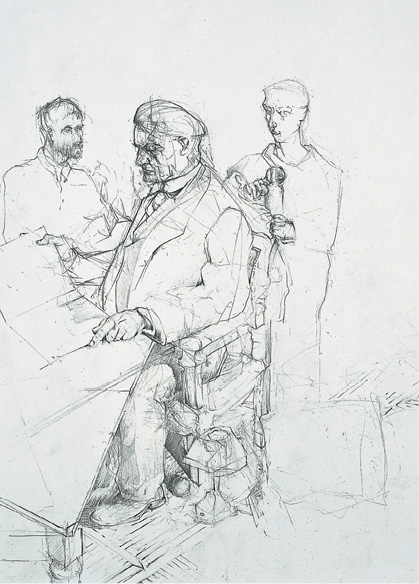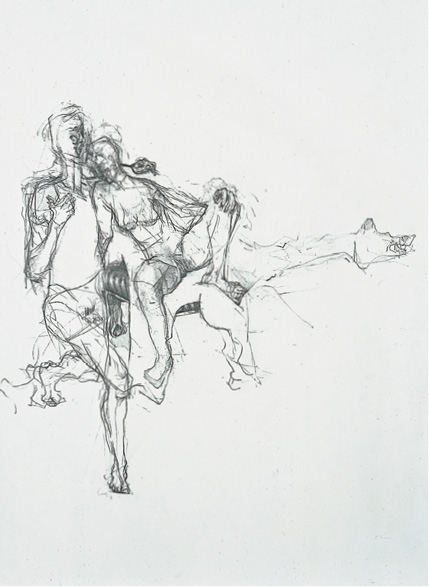FIGURE/FABRIC/FURNITURE
DAVID WEILAND
One of my objectives in drawing is the faithful depiction of what is seen. In the beginning, this was almost all I could do—just look and try to get it right. My project has dealt with different aspects of portraiture, and realism was the initial vehicle for expressing the nature of the subject. However, in struggling to break from a method based primarily on observation, I began to construct increasingly imagined settings and characters. My interest in realism did not disappear, but became critical as a support for what was imagined.
My focus turned to the clothing and furniture surrounding the body and how they could physically and visually influence the portraits. The drawing no longer follows a single visual logic. Different components of the setting may belong to different characters and are, in some sense, created by them. The mutable environment became an extension of the body—a body language—and thus a form of communication between the mute characters.
The construction of a meaningful continuum between body, clothing, upholstery, and furniture is fundamentally an architectural problem. Bridging the gap between ourselves and the built environment needs a language in which material is free to behave as humans do.


FIGURES 15 and 16
Pencil on paper